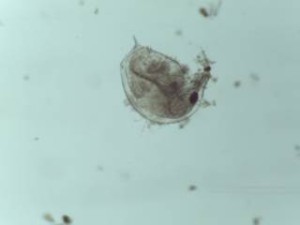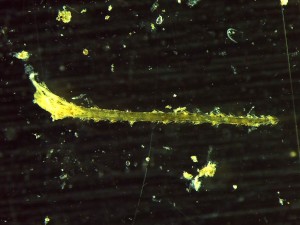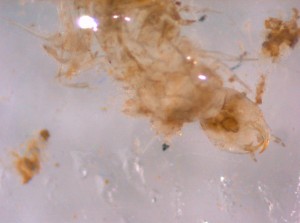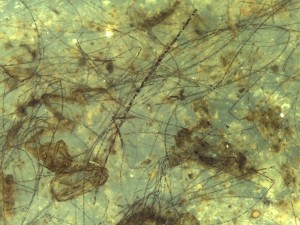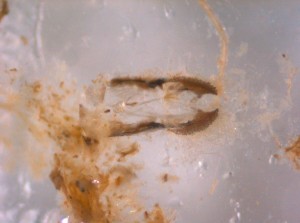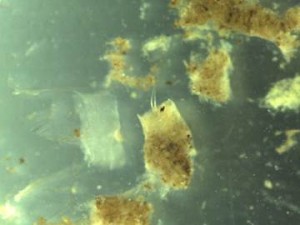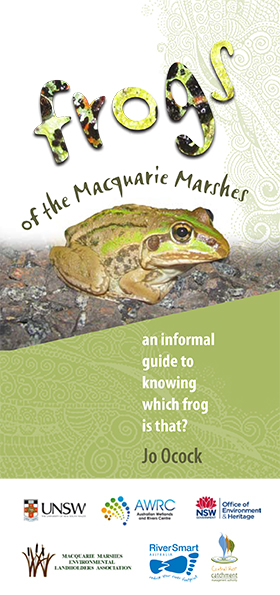Small things are eaten by medium-sized things, which are eaten by big things, which are in turn eaten by even bigger things. We tend to find it easy to imagine the animals at the ‘big’ end of the scale – lions, sharks, eagles, t-rex – but recently, I’ve been getting excited looking at the things at the ‘small’ end of the food-web. Specifically, what is the ‘small thing’ that tadpoles are eating?
Not all tadpole species eat the same thing. One species in the tropics eats unfertilised eggs that the mother frog lays specifically for them, it’s called ‘oophagy’. This recently discovered group of species does it and as does the vampire flying frog. Other species are notorious carnivores and cannibals. The Megophrys genus of species are so dedicated to eating the tiny things floating on the surface of a pond or stream, they hang suspended in the water by their peculiar upturned funnel-shaped mouth.
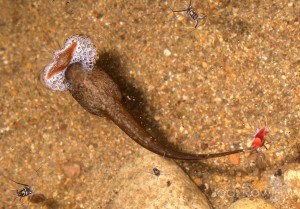
The common species in the floodplain wetlands of the Murray Darling Basin are not that kooky, but surprisingly there is very little information on what they are actually eating. Marion Anstis’ wonderful book notes that the barking marsh and spotted marsh frog feed on “vegetation and sediment, as well as available protein such as dead insects and tadpoles”. But I wanted to know more.
I got my chance as part of a project, funded by ILWS Charles Sturt University, aimed at understanding the food sources of these species using two methods, gut content and stable isotope analysis.
We collected up to six tadpoles from five different wetlands around the Murrumbidgee floodplain. For the first part of the work, I really didn’t know if I’d even be able to identify anything from my dissection of the gut. Fortunately, I had a high-powered microscope, and suddenly a world of ‘small things’ opened up.
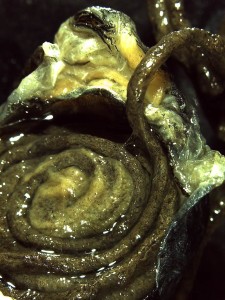
I could see bits of invertebrates including zooplankton, beetle larvae and chironomid larvae, bits of vascular plants of various shapes, and long sections of filamentous algae (see below). Plus lots of mush. Even more fascinating was realising the tadpoles seemed to be ‘hoovering up’ items relative to how available they were in the environment around them. Where there was more zooplankton in the water, there was a higher number in the gut.
I’ve a sneaking suspicion that it is going to get a bit more complicated when I move on the results from the second part of the project. It may be that what I was seeing in the gut, may not be what is nutritionally valuable. I think that maybe even smaller things are going to be important.
